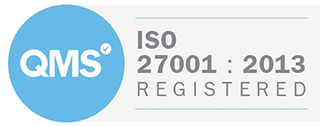
National Living Wage and Real Living Wage Changes
The Chancellor announced in his November financial statement, that there would be an increase to the National Living Wage and the National Minimum Wage which will come into force from 1 April 2021.
The National Living Wage, which is part of the mandatory National Minimum Wage Scheme, is set at £8.72 an hour for those aged over 25. However, the age from which workers are eligible for the statutory National Living Wage will drop from 25 to 23 years old from 1 April 2021, unless postponed due to the coronavirus pandemic and the rate will be increased to £8.72, also effective April 2021.
We will also see the following increases to the National Minimum Wage from 1 April 2021:
- Apprentices – an increase from £4.15 to £4.30 per hour
- 16 and 17 year olds – an increase from £4.55 to £4.62 per hour
- 18 to 20 year olds – an increase from £6.45 to £6.56 per hour
- 21 to 22 year olds – an increase from £8.20 to £8.36 per hour
The Real Living Wage is a recommendation of the Living Wage Foundation that ensure all workers earn a wage that covers the true cost of living. It is entirely voluntary for organisations to sign up to, and the rates are reviewed and revised each November.
In November, it was confirmed that the rate will increase to £10.85 in London (up from £10.75 last year) and £9.50 for the rest of the UK (increased from £9.30).
This latest increase intends to support workers through the COVID-19 pandemic. The Living Wage Foundation estimates that a full-time worker employed 37.5 hours per week will receive more than £1,500 more annually under the new Real Living Wage rate compared to the current government minimum, increasing to £4,000 for London based workers.
Other useful key employment statistics can be found in our article.
Office for National Statistics: Labour Market Overview UK December 2020
Published 15 December, the report shows:
- Since February 2020, the number of people on payroll has dropped by 819,000
- UK unemployment rate in the three months leading to October 2020 was 4.9%, slightly higher than the previous quarter, and compared to the same period in 2019 it is 1.2% higher.
- 370,000 redundancies occurred in the three months leading to October 2020, which is an increase of 217,000 for the quarter. These are record figures
- It was estimated that there were 547,000 vacancies between September and November 2020, which compared to the same period 2019, is a reduction of 251,000
- Growth in average total pay, including bonuses increased to 2.7% between August and October 2020.
Other Statistics
- According to the Treasury, the Kickstart scheme accounted for over 19,000 jobs in November.
- According to the Recruitment and Employment Confederation (REC) the number of job adverts reached a 2020 high in December. For the period 23 November to 6 December there were 1.40 million active job adverts.
- HMRC have reported that for the month of November the total value of Furlough claims was £43 billion and increase of nearly £2 billion on the previous month. The total number of employers using the furlough scheme was 1.2 million and the number of jobs furloughed accounted for 9.6 million.
HR and Payroll Support
If you require support with your payroll or any other HR-related issues, please call HR Solutions on 0844 3245840.








